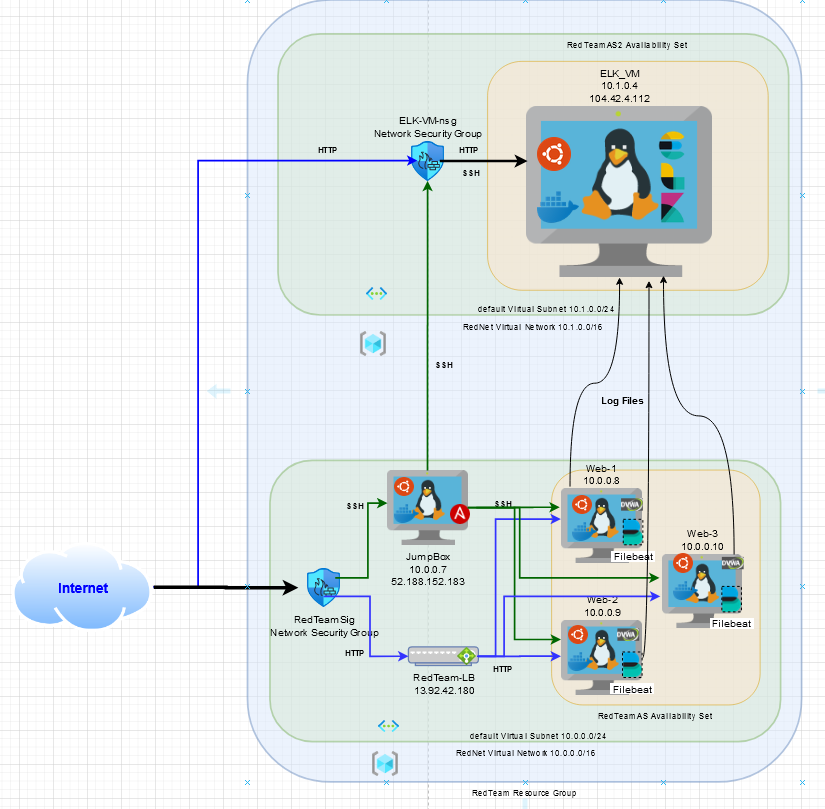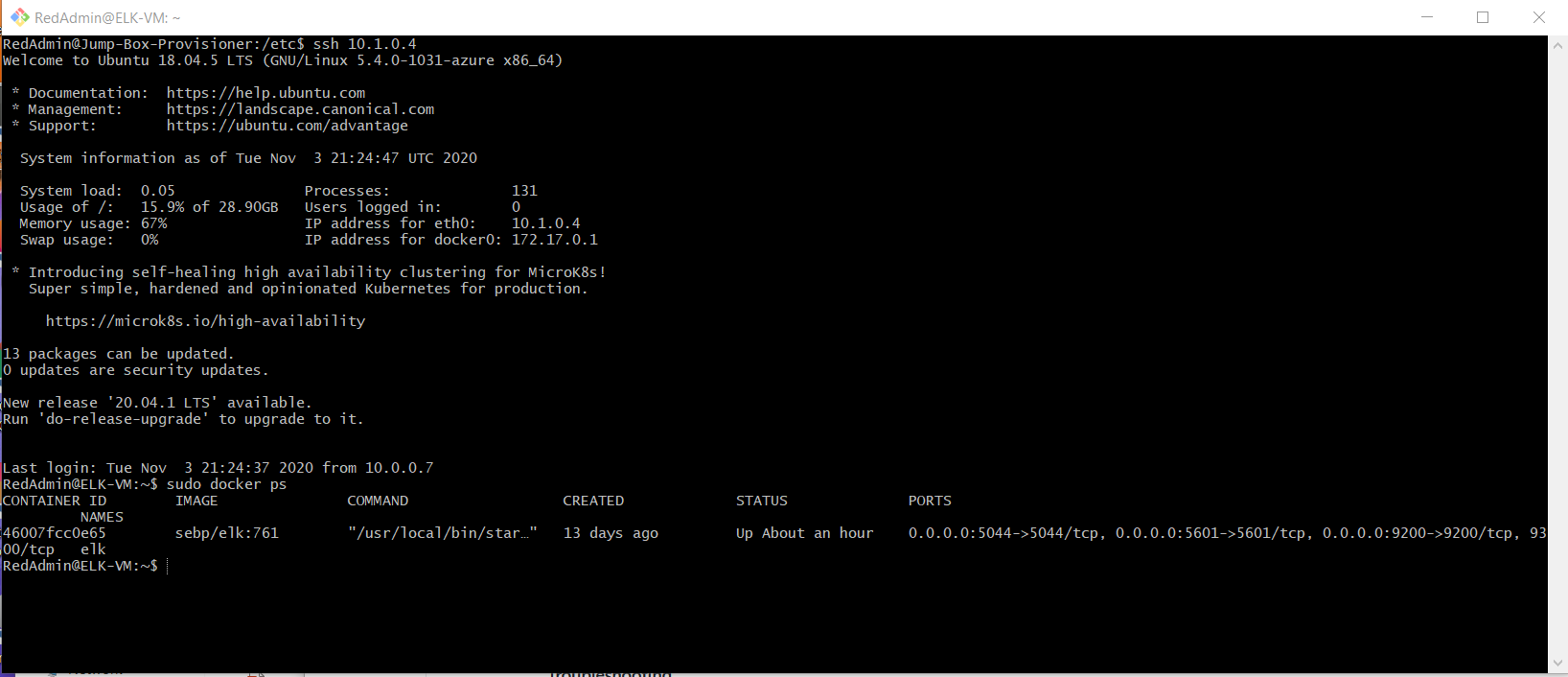ELK-stack-project
Automated ELK Stack Deployment
The files in this repository were used to configure the network depicted below.

These files have been tested and used to generate a live ELK deployment on Azure. They can be used to either recreate the entire deployment pictured above. Alternatively, select portions of the /etc/ansible/install-elk.yml file may be used to install only certain pieces of it, such as Filebeat.
- /etc/ansible/install-elk.yml
This document contains the following details:
- Description of the Topology
- Access Policies
- ELK Configuration
- Beats in Use
- Machines Being Monitored
- How to Use the Ansible Build
Description of the Topology
The main purpose of this network is to expose a load-balanced and monitored instance of DVWA, the D*mn Vulnerable Web Application.
Load balancing ensures that the application will be highly redundant, in addition to restricting traffic to the network.
- What aspect of security do load balancers protect? redundancy (fault tolerance)
- What is the advantage of a jump box? A jump box is a hardened and monitored device that controls access to other internal devices
Integrating an ELK server allows users to easily monitor the vulnerable VMs for changes to the filesystem and system resources / availability.
- What does Filebeat watch for? log files and filesystem changes
- What does Metricbeat record? system-level CPU usage, memory, file system, disk IO, and network IO statistics
The configuration details of each machine may be found below. Note: Use the Markdown Table Generator to add/remove values from the table.
| Name | Function | IP Address | Operating System |
|---|---|---|---|
| Jump Box | Gateway | 10.0.0.7 / 52.188.152.183 | Linux |
| Web-1 | DVWA | 10.0.0.8 | Linux |
| Web-2 | DVWA | 10.0.0.9 | Linux |
| Web-3 | DVWA | 10.0.0.10 | Linux |
| ELK-VM | ELK Server | 10.1.0.4 / 104.42.4.112 | Linux |
Access Policies
The machines on the internal network are not exposed to the public Internet.
Only the JumpBox machine can accept connections from the Internet. Access to this machine is only allowed from the following IP addresses:
- My home network public IP address
Machines within the network can only be accessed by JumpBox.
- JumpBox 52.188.152.183 / 10.0.0.7
A summary of the access policies in place can be found in the table below.
| Name | Publicly Accessible | Allowed IP Addresses |
|---|---|---|
| Jump Box | Yes (SSH) | SSH:My home network IPaddr |
| Web-1 | Yes (HTTP) | HTTP:any, SSH:10.0.0.7 |
| Web-2 | Yes (HTTP) | HTTP:any, SSH:10.0.0.7 |
| Web-3 | Yes (HTTP) | HTTP:any, SSH:10.0.0.7 |
| ELK-VM | Yes (HTTP, SSH) | HTTP:any, SSH:10.0.0.7 |
Elk Configuration
Ansible was used to automate configuration of the ELK machine. No configuration was performed manually, which is advantageous because…
- Infrastructure as Code (easier to read & can be revision controlled)
The playbook implements the following tasks:
- Configure syslog to use more memory
- Install docker.io
- Install python3-pip
- Install Docker python module
- Install ELK Stack
- Enable Docker service
The following screenshot displays the result of running docker ps after successfully configuring the ELK instance.

Target Machines & Beats
This ELK server is configured to monitor the following machines:
- Web-1 (10.0.0.8)
- Web-2 (10.0.0.9)
- Web-3 (10.0.0.10)
We have installed the following Beats on these machines:
- Filebeat
These Beats allow us to collect the following information from each machine:
- Filebeat reads and forwards log files, and monitors file system changes.
Using the Playbook
In order to use the playbook, you will need to have an Ansible control node already configured. Assuming you have such a control node provisioned:
SSH into the control node and follow the steps below:
- Copy the install-elk.yml file to /etc/ansible.
- Update the /etc/ansible/hosts file to include the ELK server (and the webservers)
-
Run the playbook, and navigate to http://104.42.4.112:5601/app/kibana to check that the installation worked as expected.
- Which file is the playbook? Where do you copy it? /etc/ansible/install-elk.yml
- Which file do you update to make Ansible run the playbook on a specific machine? How do I specify which machine to install the ELK server on versus which to install Filebeat on? /etc/ansible/hosts
- _Which URL do you navigate to in order to check that the ELK server is running? http://104.42.4.112:5601/app/kibana
As a Bonus, provide the specific commands the user will need to run to download the playbook, update the files, etc.